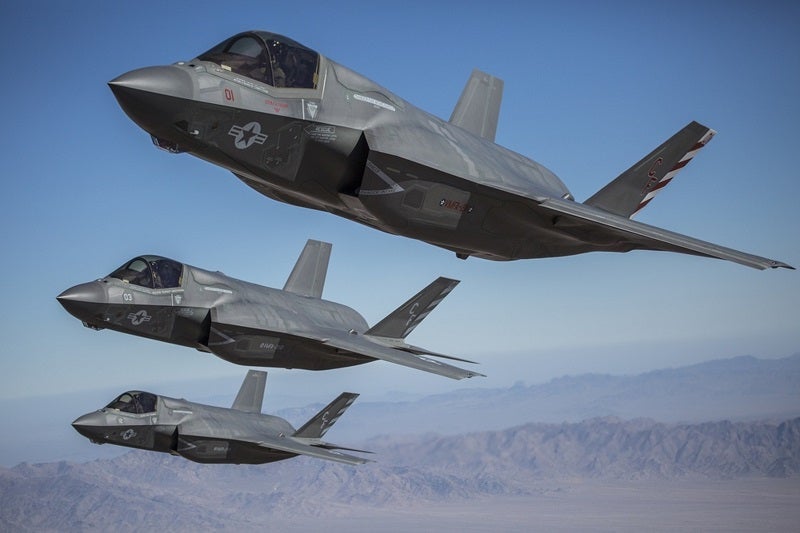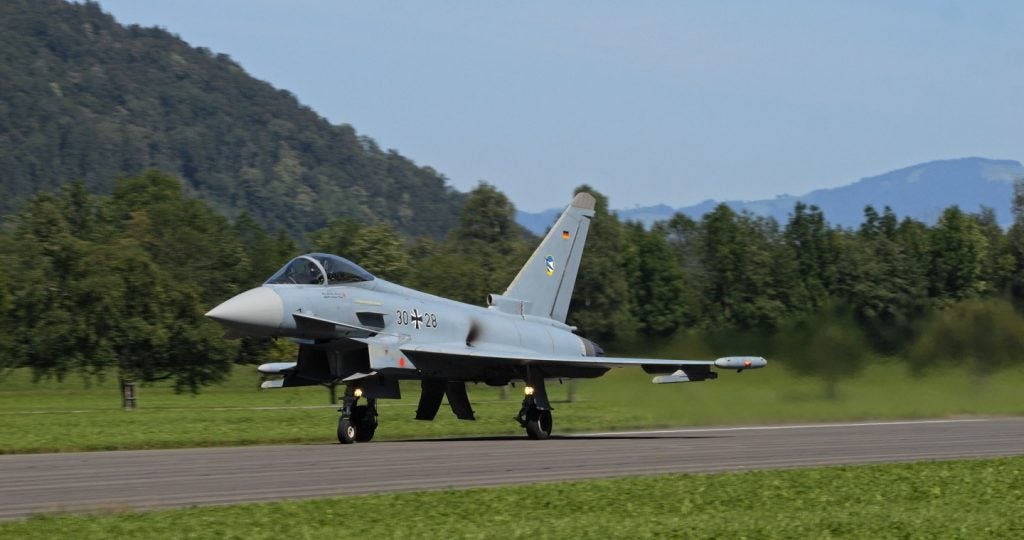
A year on from launching the Global Combat Air Programme (GCAP) in December 2022, the Governments of Italy, Japan and the UK signed a treaty formalising their joint pursuit of a sixth-generation fighter jet, officially locking them into a legal framework.
This is arguably the most important point in the life of the future fighter jet. The trilateral alliance will need to determine the design of the aircraft before manufacturing begins and ensure the team effectively manages the programme throughout the platform’s lifecycle.
A lot depends on these two precepts. While they may be obvious in the backdrop of a highly contentious geopolitical environment, it is still vital to define the alliance’s approach to both.
In that respect, these three nations, now locked into the GCAP International Government Organisation (GIGO), ought to learn from the difficulties that continue to reverberate in other existing combat air programmes, such as the Eurofighter Typhoon, F-16 Fighting Falcon and the F-35 Lightning II.
Getting it right from the start
During a House of Commons Defence Committee hearing on the 9 January 2024, Tim Rowntree, the former director of the pan-European procurement management agency, Operation for Joint Armament Co-operation (OCCAR), stated:
“What we need to do with GCAP is to absolutely promote the concept of a responsibility to agree. The governing nations really need to think of the challenge and give us a mandate that takes it on.”
How well do you really know your competitors?
Access the most comprehensive Company Profiles on the market, powered by GlobalData. Save hours of research. Gain competitive edge.

Thank you!
Your download email will arrive shortly
Not ready to buy yet? Download a free sample
We are confident about the unique quality of our Company Profiles. However, we want you to make the most beneficial decision for your business, so we offer a free sample that you can download by submitting the below form
By GlobalDataBased on concerns from the previous Eurofighter programme in which the four partner nations – Germany, Italy, Spain and the UK – produced the Typhoon in the 1990s, there was a persistent problem with the agility and decision-making of participating nations to deliver the aircraft.
The former Eurofighter CEO/COO Brian Phillipson explained to the Committee that “the empowerment” of nations on the Eurofighter was weak.
“What that resulted in were individual changes and delays,” Phillipson said, even during the manufacturing phase when design details ought to have been settled.
Fundamentally, this issue is symptomatic of the sort of diplomatic crisis that can arise from within intergovernmental organisations.
However, Rowntree identified a solution based on the structure of OCCAR itself, whereby “if a nation changes its offtake – reduces a number of systems it’s buying – it compensates the other nations for that.
“So, any nation in an OCCAR programme has effectively a guarantee that its commitment will stay the same, unless the industry itself runs into problems, not because of the behaviour of other partners, and that has a stabilising effect.”
“Realpolitik says you have to agree with your partners on some things, even if it is unexpected.”
Brian Phillipson, former Eurofighter CEO/COO.
Confidence in OCCAR’s efficiency is reflected in the considerable growth of programmes the agency is managing in recent years: from 16 in 2022 to 25 in 2024. Alongside that, the agency’s operational budget also increased by more than €1bn (£855m).
“When there is a really big issue, sometimes the nations just have to sit down and reach a compromise,” Phillipson agreed. “No matter what it might say in the contract, realpolitik says you have to agree on some things with your partners on some things, even if it is unexpected.”
Open systems approach to combat air
This year, Lockheed Martin – a US defence prime – is celebrating the fiftieth anniversary of the F-16 Fighting Falcon. The combat aircraft remains as essential now as it was when it first flew from Edwards Air Force Base in California in 1974.
However, this milestone does not mark the end of the F-16’s lifecycle, in fact Lockheed Martin suggests the aircraft is in the prime of its life: the new Block 70/72 variant will leverage structural and capability upgrades that “ensure the international F-16 fleet can operate to 2060 and beyond”.
At the far end of the timeline, it could be more than a century of active service. Ultimately, this comes down to the fighter’s spiral development – as the company’s mantra suggests, “transforming the fourth generation for the next generation.”
The F-16’s adaptability enables new weapons, capabilities, sensors and effectors that are similarly used on fifth generation aircraft such as the F-35 Lightning II and F-22 Raptor.
In concert with the US Air Force and multiple F-16 Foreign Military Sales customers, Lockheed Martin has certified more than 3,300 carriage and release configurations for more than 180 weapon and store types.

GCAP will follow suit with an open systems approach that will integrate emerging technologies as they evolve in the private sector.
The UK Minister of the Armed Forces, James Heappey, referred to this approach when discussing future technologies such as quantum computing in July 2023 during the Chief of the Air Staff’s Air and Space Power conference:
“We have to be brutal in working out which are the critical flight safety systems that must be completely integrated, and everything else must be easily ripped out and replaced,” as new technology evolves.
“The danger is that the generation of planes that [we currently have], none of them have [future tech such as] quantum computing in yet, all of them will be in service when quantum computing arrives.
“So, we have to be able to buy aircraft, design aircraft, for the moment that those computers are good to go. You can rip out whatever is in there and chuck in the quantum computer, because I think that this is a tank versus cavalry, machine guns versus humans moment, I think this is going to change warfare in the most profound way.”
In a follow-up Defence Committee hearing later, on 24 January, Herman Claesen, managing director of Future Combat Air Systems, also known as Tempest in UK parlance, at BAE Systems – a prime industry partner working on the GCAP programme – explained at the time.
“We’re using an open system architecture where the software is more independent of the hardware. [This] makes it easier at the start, but also through life, to change the software on the hardware, which was harder to do in previous generations,” said Claesen.
For GCAP specifically, the UK MoD has embraced this iterative development with its adoption of the PYRAMID Open Mission System – an open systems approach that will make upgrades more rapid and reduce software maintenance costs.
However, the prevailing challenge to an open systems approach is ensuring the software running the platform is reliable. UK Royal Air Force Air Commodore Martin Lowe, the Tempest programme director for the MoD, stated:
“Software is key for Tempest because the future operational environment demands adaptability, including frequent software updates. But software is also a big delivery risk. Recent history shows the dangers that arise when software is done badly and the advantages of doing software well.”
GCAP capabilities will be delivered, in part, by millions of lines of code on the aircraft, with many more lines of code also present in ground-based systems. This means the software on Tempest needs to be more robust and resilient than that on its potential adversaries.
Problems with managing update requirements
It is all well and good designing an open architecture for timely technology insertions, however there is also the problem of sticking to a comprehensible development roadmap to balance the affordability and performance of future fighter jets.
There are lessons in management that GIGO must learn from the ongoing development of the F-35 Lightning II Joint Strike Fighter. The US Department of Defense has neglected direct oversight over the modernisation efforts.
According to the US Government Accountability office (GAO), F-35 modernisation continues to face considerable cost growth and delays.
The multi-role fighter is the largest military combat aircraft endeavour ever created. The US Government plans to acquire 2,470 F-35s to replace several other aircraft used by the Air Force, Navy and Marine Corps.
As of December 2023, the programme has delivered 900 aircraft to the armed forces and foreign military sales customers. Recently, on 26 January 2024, the Hellenic Air Force purchased 40 F-35A conventional take-off and landing aircraft for $8.6bn.

The GAO has reported a wide range of challenges in the F-35 programme over the past two decades. The watchdog found that the programme is now more than a decade behind schedule and $183bn over original cost estimates.
Global Defence Technology spoke with Jon Ludwigson, director of contracting and national security acquisitions, who worked on the GAO report assessing the problems with managing the F-35.
“Early on, we found the DoD proceeded without adequate knowledge and with immature technologies on this programme and faced challenges.”
Jon Ludwigson, director of contracting and national security acquisitions, GAO
“Our past work has identified the importance of developing a strong knowledge and technological maturity before starting programmes,” he noted. “Early on, we found the DoD proceeded without adequate knowledge and with immature technologies on this programme and faced challenges.”
Now in its fifth year, the F-35 is due to undergo ‘Block 4 modernisation,’ which addresses new threats to the aircraft since the DoD’s original requirements. Block 4 capabilities require more power and cooling than anticipated, which has prompted the DoD to modernise the overworked F135 engine.
Originally due to be completed in 2026 and determined to cost $10.6bn, Block 4 has risen to $16.5bn and is now estimated to conclude in 2029.
“We recommended that Block 4 should be a distinct acquisition effort, not nested inside the baseline programme. Congress has recently directed DoD to take steps to do this. We believe these efforts should enable stronger oversight of the Block 4 effort.”
Without oversight over the development process after the new platform reaches initial operating capability in 2035, the GCAP aircraft could face the same costs, delays and setbacks as the F-35.
The war in Ukraine has underlined the necessity of air superiority in the decades going forward. Lacking Block 4 capabilities will render the world’s most sophisticated platform far less survivable against near-peer level threats.
As a result of new demands in an innovative era, the DoD has added extra capabilities nearly every year since Block 4 began – leading to the aircraft’s capabilities growing from 66 to 80. While the US Government’s ambitions for the platform grow so too does the time it takes to bring this up-to-date aircraft into a state of readiness.
For that reason, deployability is now cardinal requirement that has come to the forefront of the minds of customers, a tenet that is now surpassing the performance of a system.
The UK MoD has been astute in its recognition of the importance of the delivery of capabilities in last year’s Defence Command Paper, which argues for practices to be put in place that ensure that programmes are delivered faster, using more open architecture and spiral development:
“The experience of Ukraine has reminded us that accepting 80% can deliver effective and robust capability into the hands of the users today. Waiting for 100% – the exquisite solution – may mean losing strategic advantage.”
Should the UK encourage this practical-mindedness when developing the future GCAP aircraft, then the platform will prove as useful as intended, as it will have dodged the problems the F-35 currently faces.






